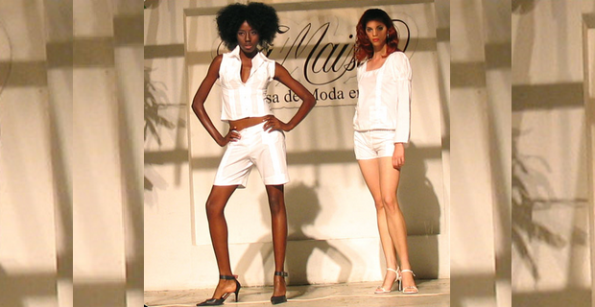 If, like 22-year-old Yoan, you consider it a priority to dress in the style of a male fashion model and you spend all your spare time in the gym sculpting your body, then the bill could exceed your income.
If, like 22-year-old Yoan, you consider it a priority to dress in the style of a male fashion model and you spend all your spare time in the gym sculpting your body, then the bill could exceed your income.
Yoan maintains a lifestyle similar to an average middle-class guy in any developed country thanks to his family in Florida.
A European fiancé and a Canadian lover allow him certain whims and niceties such as frequent lunches in good privately owned restaurants and mojitos in exclusive bars.
Bisexual and discreet, he prides himself on being a high-end male prostitute. He does not work as a gigolo nor does he have a Hummer parked in his garage, though this is his dream.
He has a closet filled with expensive jeans, Italian loafers and athletic shoes. He is well-stocked with Chanel No. 5, Heno and Prava soaps and American-made Colgate toothpaste, which he acquired for six dollars on Obispo Street.
He likes to buy brand-name clothing in high-end stores in Havana’s Miramar district and the Hotel Saratoga, places whose prices rival those of Manhattan. He just bought a pair of Diesel jeans for 120 CUC (Cuban convertible pesos), a pair of Nikes for 127 CUC and a Puma pullover for 93 CUC.
This comes to 340 CUC, the equivalent of a year and a half’s salary for a professional on the island. And believe me, his story is not some surrealist portrait of Havana in the 21st century. Yoan is not the son of that privileged class made up of the Communist Party politburo elite. By no means.
There is in Cuba a segment of young people of both sexes who can can afford to dress stylishly and polish their figures with the money they earn selling their bodies to foreign tourists.
Successful artists, communist businessmen and slackers supported by a constant flow of dollars from relatives in Miami are also able to maintain their wardrobes, but they are the minority.
Most Cuban families try to buy clothing and shoes at a discount. The state does not give them many options. After Fidel Castro took power, he introduced two types of ration cards in 1962, one for food and one for manufactured goods. Every Cuban was allowed a yearly pair of shoes, a skirt or pair of slacks, and two shirts or blouses made of unremarkable fabric. Their prototypes were created by decree, without originality or quality.
It was the period of social equality and uniformity. This socialist form of poverty provided Cuba with Minsk refrigerators, Aurika washing machines, Selena radios and Lada cars, all from the former Soviet republics. Other manufactured goods came from Czechoslovakia, East Germany, Bulgaria, Poland, Hungary and Albania.
At the end of the 1970s the Cuban exile community in the United States began travelling to Cuba, packing their luggage with jeans, T-shirts and tennis shoes, things that were novelties in the island of the Castros.
Trafficking of clothing has always been good business on the underground market. The 1980s saw the emergence of a network of speculators who bought dollars at a time when possession of foreign currency was illegal and then used them to purchase inexpensive fabric from shops intended for diplomats and foreign technical workers.
Prices were high. At the time the lowest salary did not top 120 pesos. However, a pair of denims cost 150 pesos, a pair of Cast shoes was 120 and a “bacteria” shirt went for about 130 pesos.
After 1959 dressing fashionably in Cuba was an aspiration whose costs could not be defrayed with the average monthly salary. After it became legal to possess dollars in 1993, shopping malls were opened that sold clothing bought in bulk from free trade zones in China and the Carribean.
A high-powered segment of the consumer market has access to boutiques with heart attack inducing prices. They carry brands such as Mango, Zara, Dolce and Gabbana and — in a mockery of the embargo — Guess jeans and items by Nike, Reebok and New Balance.
The average Cuban often has to turn to hard-currency stores where the regime sells low-end clothing at high-end prices.
A pair of pants, a shirt and a pair of jeans of questionable quality costs a total of 60 CUC, three-month’s salary for the average worker. The now-outlawed private clothing stalls provided some relief. Cubans with family members overseas continue to benefit from the packages they receive, which contain essential items such as shoes.
Cubans care for their footwear as though they were precious jewels. Shoes are expensive so, when they wear out, people take them to shoe repair shops. In any given neighborhood you will find people who specialize in recycling and refurbishing shoes that in another country would be thrown in the trash. Athletic shoes have uses their designers never imagined.
They are repaired several times and are usually worn by kids, teenagers and young people who play baseball or football in the street. Yoan the hooker knows. So when they get new shoes they give the old ones to the neediest neighbors.
Except for the revolutionary aristocracy, who live in exclusive enclaves, one finds in Cuba hookers, johns, police officers, doctors, self-employed workers, dissidents and agents from State Security all living in the same block. And all know first hand of the cost of dressing decently.
Iván García
1 December 2013
